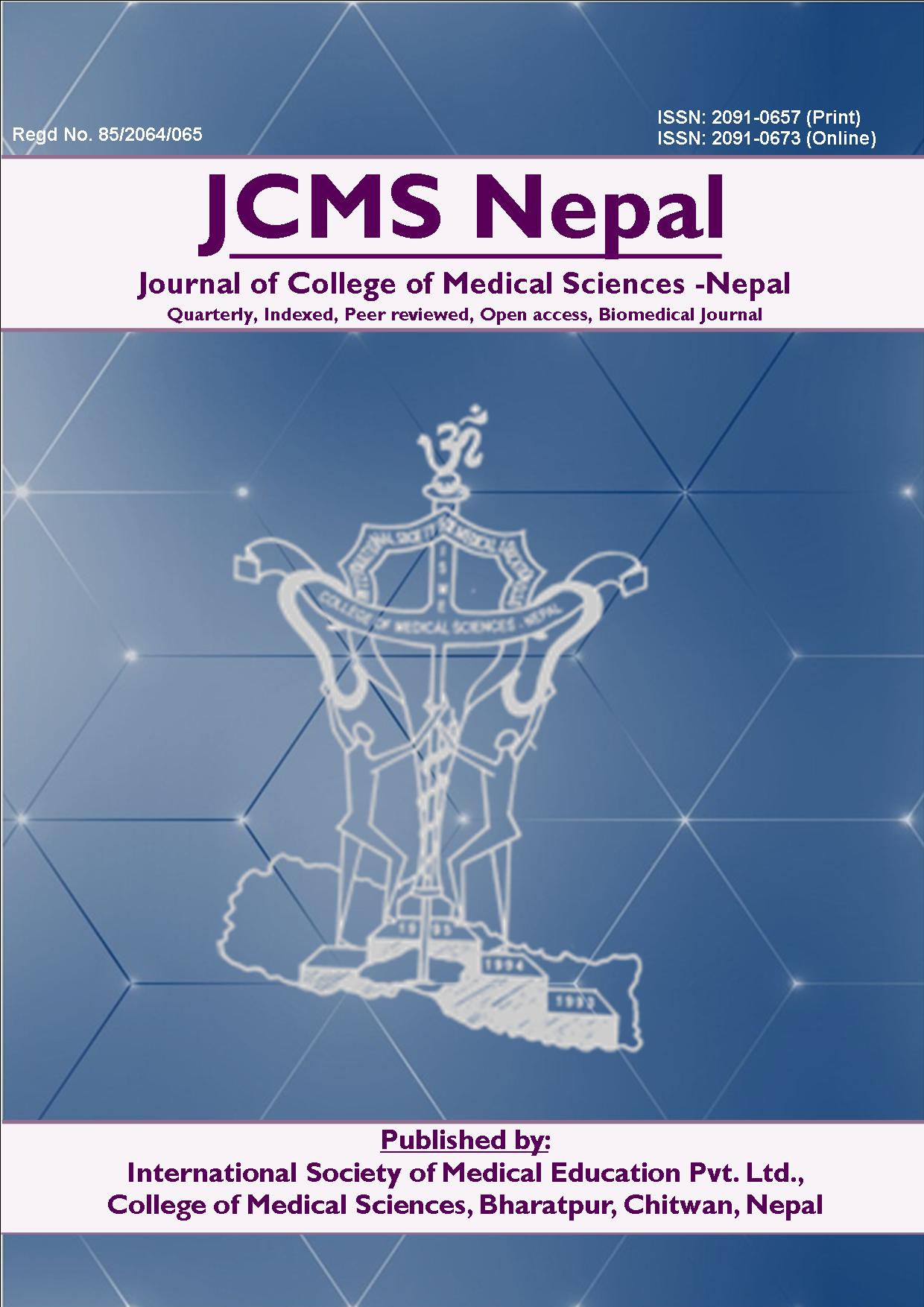Overview of Ventilator-Associated Pneumonia in Traumatic Cervical Spinal Injury in Trauma Center of Nepal
DOI:
https://doi.org/10.3126/jcmsn.v20i1.58521Abstract
Background
Cervical spine, crucial for nerve innervation and head and neck motion, is vulnerable to injury due to its over-reliance on ligaments. This study examines the increasing incidence of traumatic spinal cord injuries, particularly in fall and traffic accidents, with respiratory complications being the leading cause of morbidity and mortality, with VAP being a significant complication.
Methods
A retrospective cross-section study involving 52 patient data, using self-prepared proforma. The patient’s age, sex, injury severity, and CPIS score were used to determine VAP.
Results
The study involved 52 patients with a mean age of 50.96. Of these, 67.3% were male and 11.5% female, with 45-60 years being the most common age group. The most severe spinal injury patients, i.e., ASIA A Neurology, developed VAP. Patients with prolonged ICU stay and intubation days also developed VAP, but no statistical significance was seen (P-value: 0.3941 and 0.4751). Mortality had a significant association with VAP (P-value: 0.023). Acinetobacter Baumann was the most common microorganism causing VAP, while Staphylococcus aureus was the least common. The most sensitive antibiotics for isolated organisms were Polymyxin B, Amikacin, Colistin, and Levofloxacin.
Conclusions
The study found a high prevalence of ventilator association pneumonia (VAP) in cervical spine fracture patients, with mortality associated with the most common organism being Acinetobacter, sensitivity to Polymyxin b. Further monitoring and implementation of VAP prevention strategies are recommended.
Downloads
Downloads
Published
How to Cite
Issue
Section
License
Copyright (c) 2024 Nabin Pokhrel, Aastha Neupane, Dr Rupesh Kumar Yadav , Dr Pawan Kumar Hamal , Siddhartha Dhungana, Dr Anukul Subedi

This work is licensed under a Creative Commons Attribution-NonCommercial-NoDerivatives 4.0 International License.
This license enables reusers to copy and distribute the material in any medium or format in unadapted form only, for noncommercial purposes only, and only so long as attribution is given to the creator.




